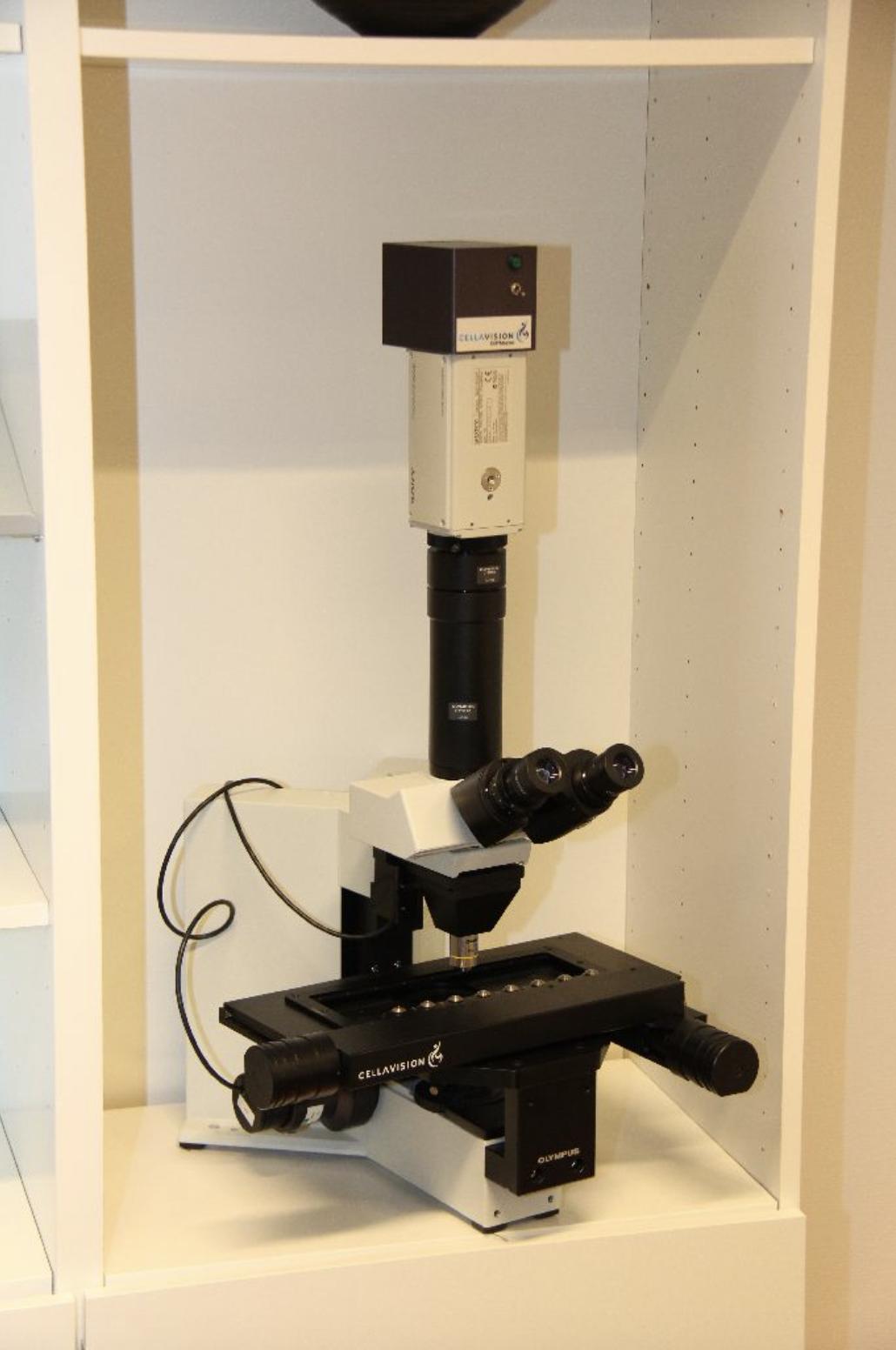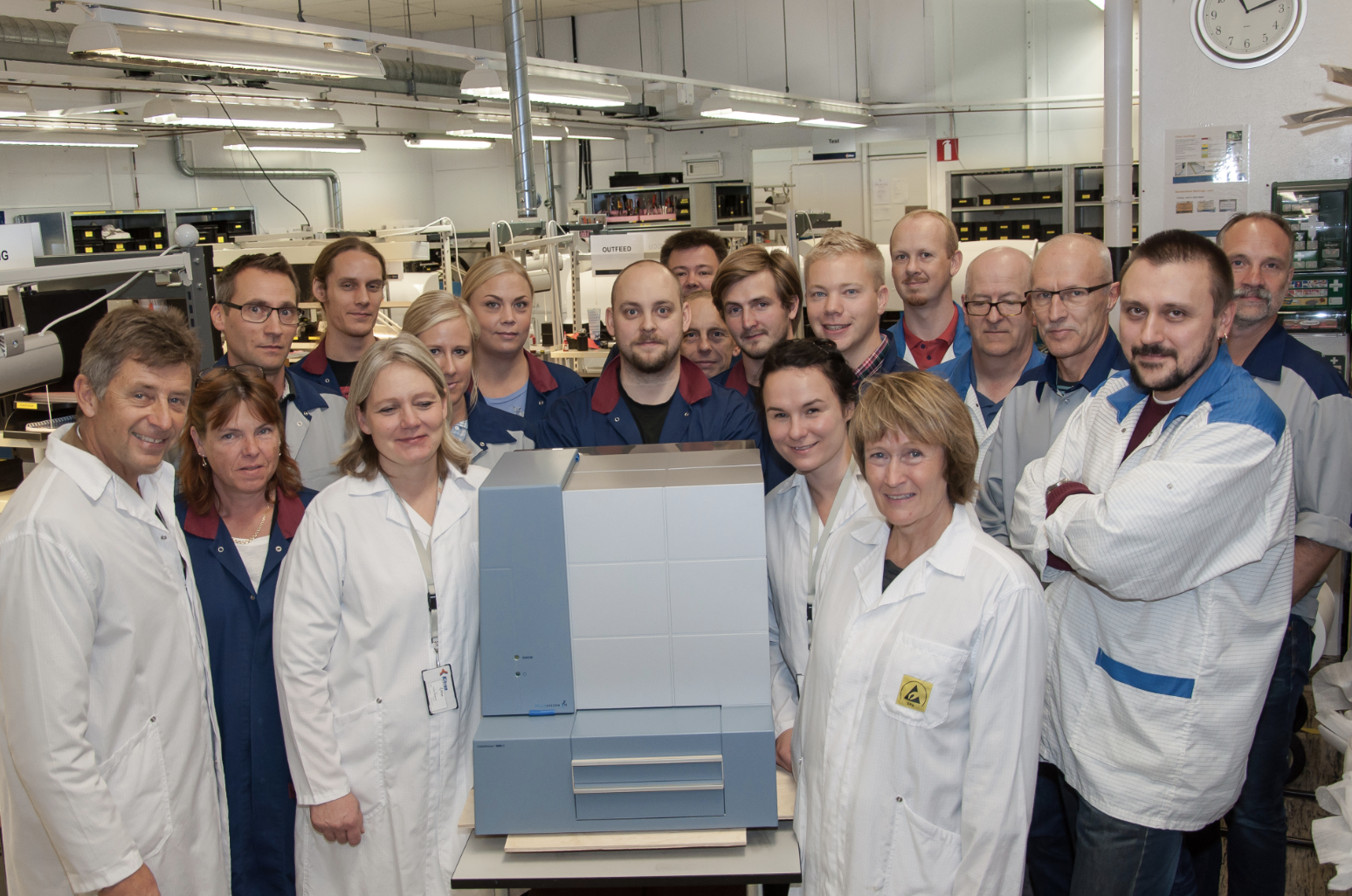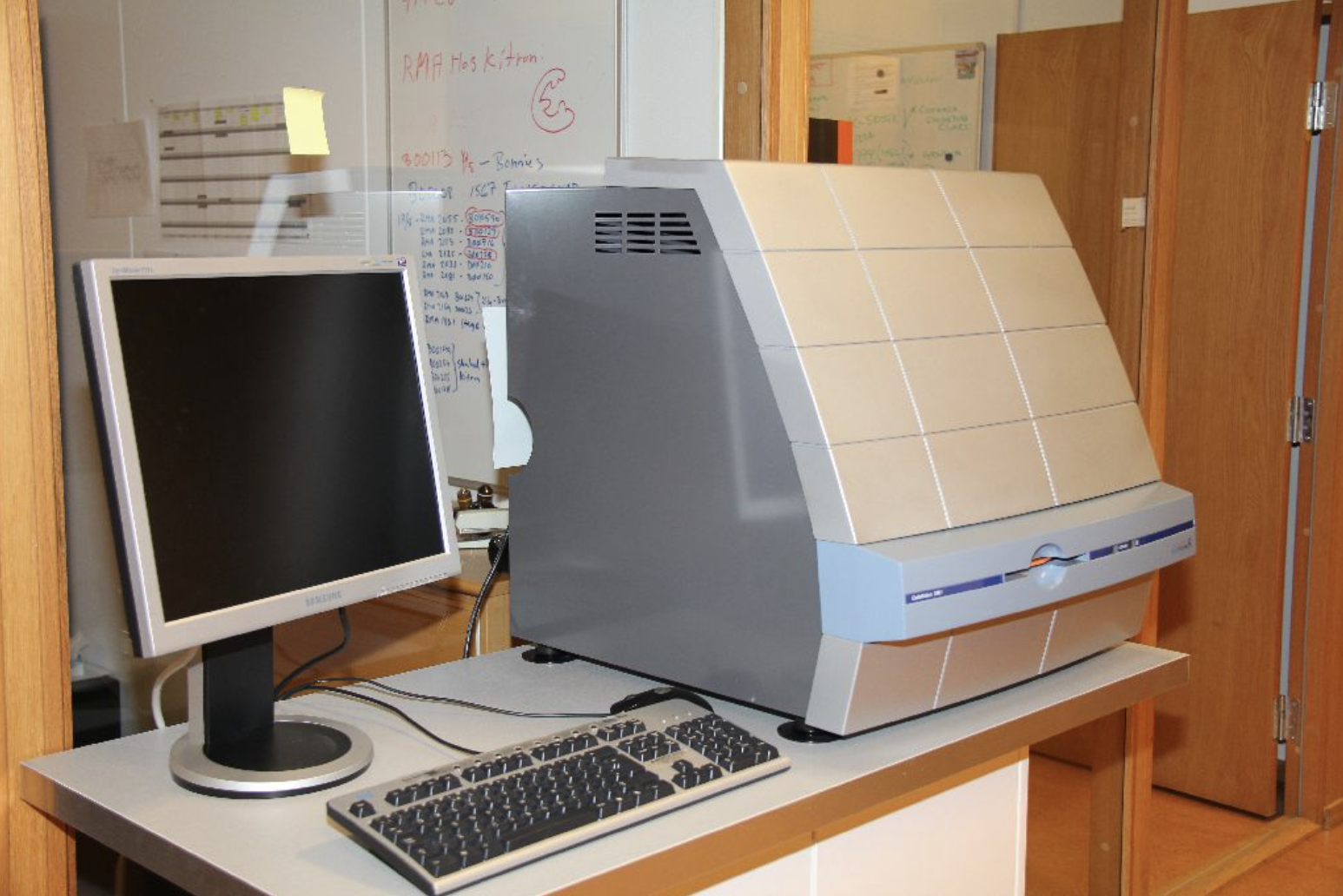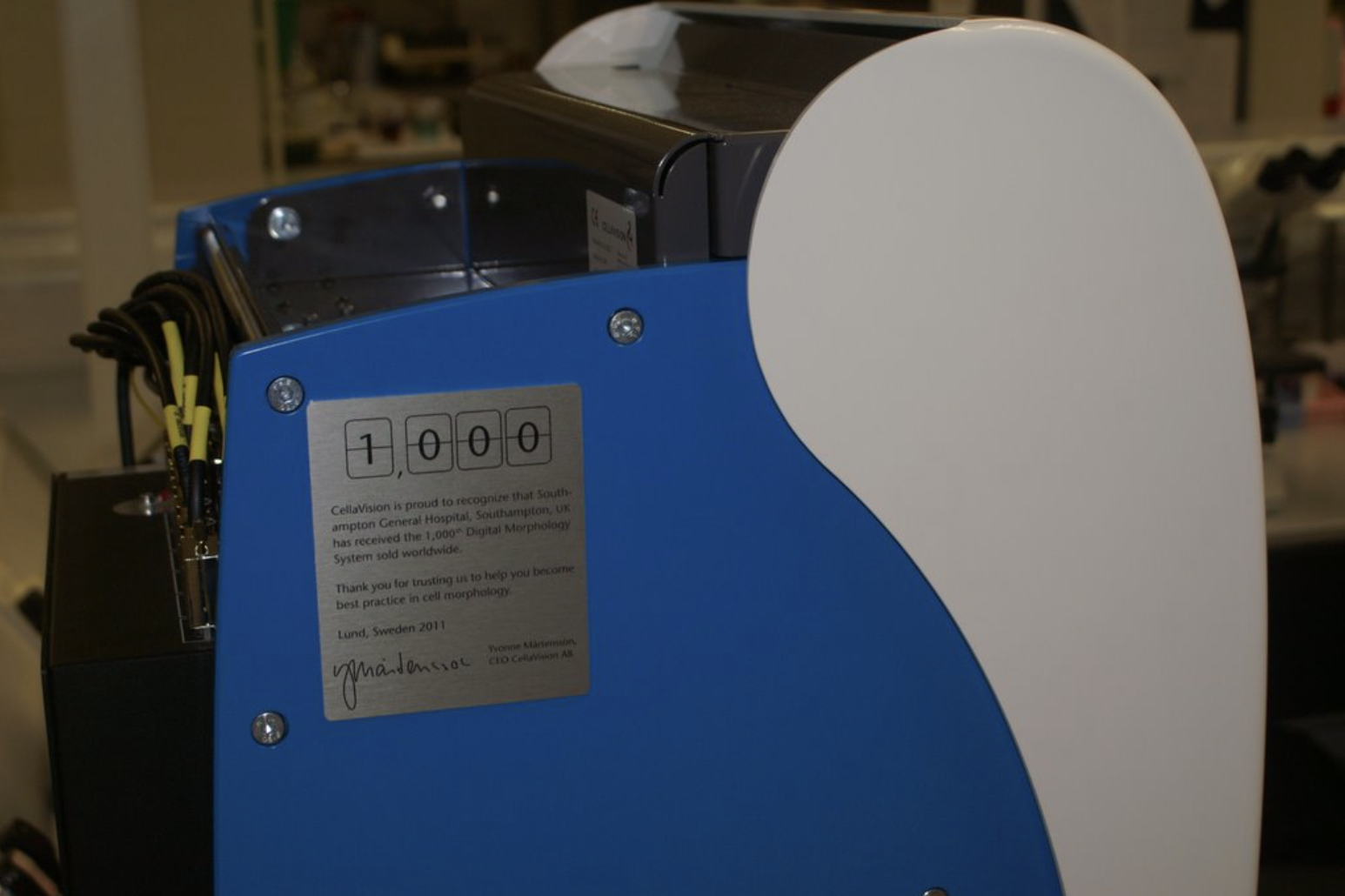The DiffMaster Octavia, now discontinued, was CellaVision's first product, launched in early 2001. It featured a modified standard microscope for high-speed movements, an automated 8-slide stage, a control box for illumination and stage movements, a high-speed CCD camera, and software for pre-classifying white and red blood cells. The University Hospital in Malmö, Sweden, was the first customer, reporting their initial results on November 21, 2001.

Despite its innovation, the DiffMaster Octavia did not meet expected success, with only about 80 systems sold. CellaVision recognized the need for a more automated system with higher throughput, leading to the development of the CellaVision DM96 in just two years. This new device, launched in 2003, featured a 96-slide capacity using 8 magazines, automatic oil dispensing, and automatic barcode reading of slides.
Around the same time, CellaVision acquired the American company Intelligent Medical Imaging (IMI), which had developed a similar product, the Micro21. This acquisition provided CellaVision with additional knowledge and solutions, which were integrated into the DM96. It also established CellaVision's first US office in Jupiter, Florida. The DM96 was highly successful, with over 1,000 units sold until its discontinuation in 2014.

Targeting mid-sized laboratories, CellaVision introduced the DM8 shortly after the launch of the DM96. The DM8 had an 8-slide capacity and lower throughput than the DM96 but used the same sophisticated software for cell finding and pre-classification. It was sold between 2005 and 2010, when it was replaced by the DM1200. Unlike previous models built on third-party microscopes, the DM1200 featured CellaVision's own microscope and introduced LED illumination.

By 2011, CellaVision had sold instrument number 1,000, marked with a special plaque, and sold to University Hospital Southampton NHS Foundation Trust in the UK. That same year, CellaVision partnered with Sysmex to develop a digital cell morphology system integrated into the Sysmex hematology line, resulting in the launch of the Sysmex DI-60 in 2013.

In 2014, the CellaVision DM9600 was introduced as a replacement for the DM96. To cater to small and medium-sized laboratories, the CellaVision DC-1, a compact single-slide device, was launched in 2019, featuring an in-house developed intelligent camera. Current CellaVision devices also have veterinary versions.
As of Q1 2024, over 8,000 CellaVision instruments have been sold globally.